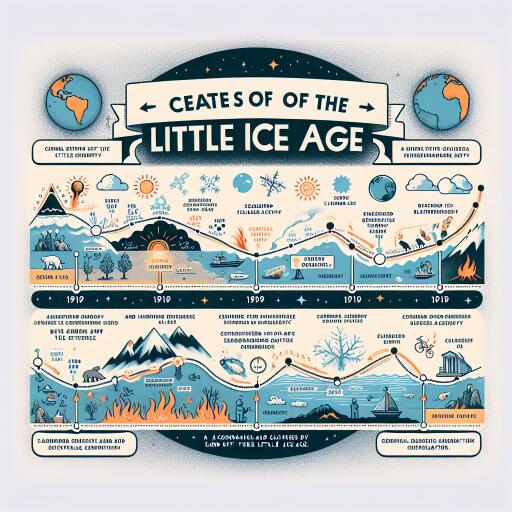
At a Glance: Unraveling the Mystery of the Little Ice Age’s Conclusion
The Little Ice Age (LIA) stands out as a notable period of cooler climate conditions primarily impacting Europe and North America from the 14th to the 19th centuries. During this time, significant glacier advance and the occurrence of frost fairs on the frozen River Thames painted a picture of a world enshrouded in persistent cold. But what brought about the end of this era and ushered in the modern climate context we are familiar with today?
Understanding the transition away from the Little Ice Age requires a dive into the complex interplay between regional and global climate influences, alongside significant external factors such as volcanic activity and variations in solar output. The beginning of the LIA is attributed to a variety of causes, with no single event marking its onset. Notably, the period was characterized by a remarkably low solar activity, known as the Maunder Minimum, and punctuated by several volcanic eruptions that had a cooling effect on the climate. However, these events alone do not entirely explain the period’s duration or intensity.
Recent studies propose that a substantial weakening of the Gulf Stream, due to increased influx of warm ocean currents into the Arctic, led to significant sea-ice break-up. This disruption resulted in the massive export of ice floes into the North Atlantic, critically altering ocean circulation patterns and causing a rapid cooling across the region around the year 1350.
As we move towards the end of the LIA, the narrative shifts. The often-cited end date of 1850 doesn’t align perfectly with temperature records, which show a significant, steady global warming trend only kicking off after 1910, postdating the LIA by several decades. This warming has only intensified since the 1970s, clearly reflecting a global pattern influenced predominantly by external forcing rather than regional variability. The primary driver behind this change? The substantial increase in greenhouse gas emissions as a consequence of human activity.
Interestingly, the transition period from the Little Ice Age into our current climate state was not without its deniers. Predictions of impending cooling trends continued to circulate, even as the evidence for global warming mounted. Yet, as we’ve moved further into the 21st century, the trends are undeniable—global temperatures are rising, challenging the narratives of even the most adamant climate change skeptics.
The end of the Little Ice Age and the transition into our warming world underscores the dynamic and interconnected nature of Earth’s climate system. As we continue to navigate the challenges of climate change, understanding the historical shifts in our planet’s climate patterns is crucial for informing our responses to current and future global warming trends.
The complexity of global climate interactions, particularly in the context of the Little Ice Age’s conclusion, highlights the need for a broad, nuanced understanding of how natural and anthropogenic forces shape our climate. The story of the Little Ice Age’s end is more than just a historical curiosity; it’s a critical piece of the puzzle in understanding our current climate crisis and anticipating the challenges that lie ahead.





Leave a Reply